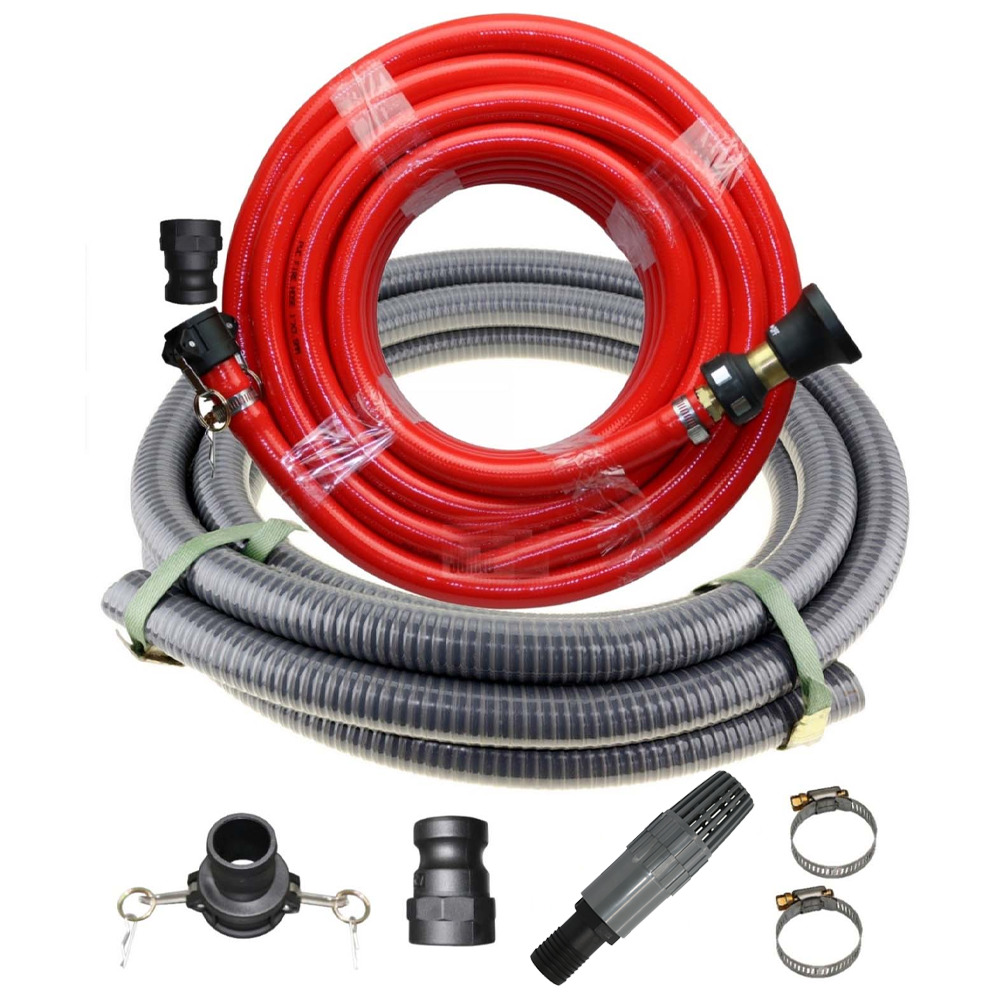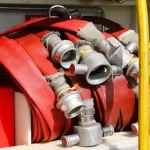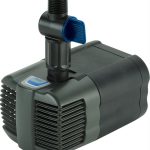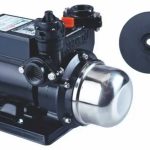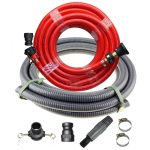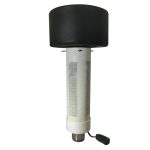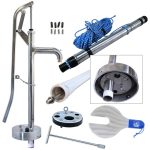In fire safety, every second counts. A fire protection pump pushes water to where it is needed quickly. Without the right hose kit, the pump cannot perform effectively. The hose kit moves water from the pump to the fire system, a simple yet critical function. This guide will help you choose the right hose kit for commercial fire protection pumps. Whether you are a building owner, facility manager, or fire safety contractor, you will understand what matters most and why.
Why the Hose Kit Matters
The hose kit connects directly to your fire protection pump and includes hoses, nozzles, couplings, and sometimes valves. These components must withstand high pressure and heat. If the hose kit fails, the fire system will not operate correctly, placing people, property, and business at serious risk.
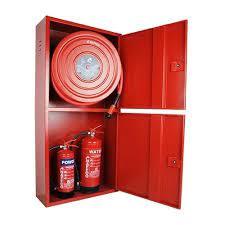
Hose Size and Compatibility
Not all hose kits are compatible with all fire protection pump. The hose diameter, connection type, and thread size must match your pump’s setup. A hose that is too small cannot handle the required pressure. A hose that is too large may not fit properly. Incorrect ends will prevent any connection. Always consult your fire pump manual or contact the hose kit supplier before purchasing.
Material and Strength
Hose kits are available in different materials, each suited for specific applications. Rubber hoses are flexible and durable for general use. Nitrile rubber is heat and oil resistant, making it ideal for industrial environments. PVC-lined hoses are lightweight and cost-effective but have lower heat resistance. EPDM hoses are resistant to chemicals and provide durability for long-term use. Select a hose material that can withstand the high heat and demanding conditions of commercial spaces.
Pressure and Flow Ratings
Commercial fire pumps deliver water at high pressures, and the hose kit must be capable of handling these levels without bursting or leaking. Check the PSI rating to ensure it meets or exceeds the pump’s requirements. Confirm the flow rate in gallons per minute to ensure the hose can manage the pump’s water output. A weak hose under pressure can fail in an emergency.
Hose Length and Flexibility
The correct hose length depends on the building layout. Short hoses are easier to store but may not reach all necessary areas. Long hoses offer greater reach but can reduce pressure. Flexible hoses are easier to maneuver during a fire emergency. Measure your pump room and high-risk zones to determine the most effective length.
Code Compliance and Certification
Fire hose kits must meet recognized safety standards. In the United States, look for NFPA compliance, UL Listed certification, and FM Approved markings. A certified hose kit ensures compliance with fire safety codes and readiness for inspection.
Easy Maintenance and Inspection
Choose a hose kit that is simple to inspect, clean, and replace. Look for clear identification markings, strong outer layers that resist cracking, and secure nozzle and coupling connections. Fire safety teams should inspect hose kits regularly and replace any worn or damaged components immediately.
Cost Versus Value
While low-cost hose kits may seem attractive, they typically wear out faster and offer less reliability during emergencies. Quality hose kits have a higher initial cost but provide longer service life, better performance, and greater safety. Consider the warranty, return policy, and supplier support when making a purchase.
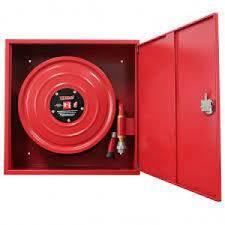
Importance of Choosing the Right Supplier
Suppliers vary in quality and expertise. Work with a trusted provider who understands fire pump systems, offers UL/FM approved products, provides competitive pricing for commercial needs, and delivers excellent customer service and technical support. Request detailed product specifications before committing to a purchase.
Conclusion
Selecting the right hose kit for commercial fire protection pump is about more than just price or length. It requires ensuring compatibility, durability, pressure capacity, and compliance with fire safety codes. A carefully chosen hose kit can greatly enhance your fire pump’s performance when it is needed most. Take the time to inspect all components, seek expert advice if necessary, and invest in quality. A dependable hose kit can save lives, protect property, and safeguard business operations.

